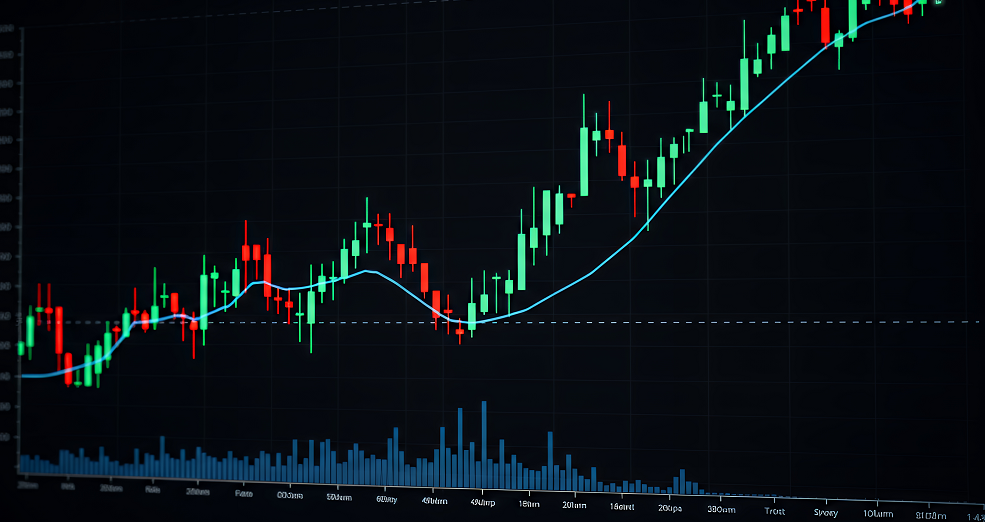IC Markets – Asia Fundamental Forecast | 31 October 2025
What happened in the U.S. session?
The U.S. trading session was characterized by significant volatility driven by three major catalysts: the Federal Reserve’s hawkish rate cut, mixed Big Tech earnings revealing surging AI costs, and a tentative U.S.-China trade truce. Chair Powell’s cautious stance on future rate cuts triggered a repricing across asset classes, with Treasury yields surging, the dollar strengthening, and rate-cut probabilities declining sharply. The U.S.-China trade agreement provided some relief but lacked concrete details, leaving markets cautious about its durability.
What does it mean for the Asia Session?
Friday presents a data-heavy session for Asian traders with several market-moving releases. The combination of China’s PMI data showing continued manufacturing weakness, Japan’s inflation readings supporting potential BOJ rate hikes, and Australia’s credit growth metrics will provide crucial insights into regional economic health. The backdrop of evolving U.S.-China trade relations, recent central bank decisions, and global inflation trends creates a complex trading environment requiring careful attention to both domestic fundamentals and international policy developments.
The Dollar Index (DXY)
Key news events today
No major news event
What can we expect from DXY today?
The dollar’s strength heading into the weekend reflects several competing forces. Fed Chair Powell’s hawkish messaging and emphasis on policy uncertainty provided immediate support, as markets recalibrated expectations for further rate cuts. The US-China trade agreement removed a significant geopolitical risk, though questions remain about implementation and longer-term sustainability. The government shutdown continues to damage economic activity, with the CBO estimating permanent GDP losses. Labor market weakness is evident in alternative data despite the absence of official reports.
Central Bank Notes:
- The Federal Open Market Committee (FOMC) voted, by majority, to lower the federal funds rate target range by 25 basis points to 3.75%–4.00% at its October 28–29, 2025, meeting, marking the second consecutive cut following the 25 basis points reduction in September.
- The Committee maintained its long-term objectives of maximum employment and 2% inflation, noting that the labor market continues to soften, with modest job creation and an unemployment rate edging higher. In comparison, inflation remains above target at around 3.0%.
- Policymakers highlighted ongoing downside risks to economic growth, tempered by signs of resilient economic activity. September’s consumer price index (CPI) came in slightly lower than expected at 3.0% year-over-year, easing inflation pressure but still warranting vigilance given tariff-driven price effects.
- Economic activity expanded modestly in the third quarter, with GDP growth estimates around 1.0% annualized; however, uncertainty remains elevated amid persistent global trade tensions and the U.S. government shutdown, which is impacting data availability.
- The updated Summary of Economic Projections reflects an anticipated unemployment rate averaging approximately 4.5% for 2025, with headline and core personal consumption expenditures (PCE) inflation projections holding near 3.0%, indicating a slow easing path ahead.
- The Committee emphasized its flexible, data-dependent approach and underscored that future policy adjustments will be guided by incoming labor market and inflation data. As in prior meetings, there was dissent, including one member advocating a more aggressive 50-basis-point cut.
- The FOMC announced the planned conclusion of its balance sheet reduction (quantitative tightening) program, intending to cease runoff in the near term to maintain market stability, with Treasury redemption caps held steady at $5 billion per month and agency mortgage-backed securities caps at $35 billion.
- The next meeting is scheduled for 9 to 10 December 2025.
Next 24 Hours Bias
Medium Bearish
Gold (XAU)
Key news events today
No major news event
What can we expect from Gold today?
Gold markets reflect a complex interplay of supportive fundamentals and near-term technical pressures. Record-breaking Q3 demand totaling 1,313 tonnes, sustained central bank buying approaching 900 tonnes annually, and surging ETF inflows demonstrate robust institutional and retail appetite for the precious metal. However, the Federal Reserve’s cautious rate-cut outlook, progress in U.S.-China trade negotiations, and profit-taking following the 50% year-to-date rally have triggered a healthy correction from October’s record highs.
Next 24 Hours Bias
Medium Bullish
The Australian Dollar (AUD)
Key news events today
No major news event
What can we expect from AUD today?
Trump-Xi meeting at APEC summit yielded agreements to reduce tariffs from 57% to 47%, suspend rare earth restrictions, and resume agricultural purchases—reducing regional uncertainty and supporting commodity currencies. As expected, the Fed delivered a 25bp cut to 3.75-4.00%, but Powell’s hawkish tone, warning against assuming a December cut, sent the dollar higher and pressured AUD/USD despite strong Australian inflation
Central Bank Notes:
- The RBA held its cash rate steady at 3.60% at its October meeting on 29–30 September 2025, marking a second consecutive pause after August’s 25 basis point cut. The move affirms the Bank’s data-dependent approach as inflation trends within the target range.
- Inflation indicators remained stable through September, with headline CPI likely anchoring near 2.2%—comfortably within the 2–3% band. Insurance and housing costs remain sticky but are increasingly offset by moderation in discretionary goods.
- Trimmed mean inflation is estimated at around 2.8%, signaling underlying pressures remain contained. The Board continues to flag food and energy price volatility as short-term risks, though the broader disinflation narrative holds.
- Global conditions remain a source of uncertainty. U.S. policy expectations and uneven growth in China continue to weigh on commodities, even as trade disruptions have eased marginally since mid-year.
- Domestic growth shows resilience in the housing and services sectors, though manufacturing remains subdued. Household incomes have stabilized, but consumption remains only modest, capped by high borrowing costs.
- The labor market maintains relative tightness, though job growth has slowed notably since the first half of the year. Underutilization has ticked higher, but overall employment conditions remain supportive.
- Wage growth is plateauing, reflecting softer labor demand. Weak productivity continues to keep unit labor costs elevated, underscoring a medium-term concern highlighted repeatedly by the RBA.
- Household consumption prospects remain fragile. The combination of high rents and weak discretionary appetite suggests risks of a consumer-led slowdown in Q4 if confidence fails to rebound.
- The Board reiterated that subdued household spending poses risks to business sentiment and may dampen investment and job creation in the coming quarters.
- Monetary policy remains mildly restrictive. The RBA balanced confidence in inflation progress with caution around global and domestic demand risks, keeping further adjustments conditional on incoming data.
- The Bank reaffirmed its dual commitment to price stability and full employment, noting its readiness to act should conditions shift markedly.
- The next meeting is on 5 to 6 November 2025.
Next 24 Hours Bias
Medium Bullish
The Kiwi Dollar (NZD)
Key news events today
No major news event
What can we expect from NZD today?
The New Zealand Dollar faces a challenging environment as it closes out October 2025. While improving business confidence and the US-China trade truce provide some positive underpinnings, several factors are weighing on the currency. Negative Pressures: Renewed US Dollar strength following hawkish Fed commentary, declining dairy prices in consecutive GDT auctions, weak consumer confidence, and expectations of further RBNZ rate cuts are limiting NZD upside.
Central Bank Notes:
- The Monetary Policy Committee (MPC) agreed to cut the Official Cash Rate (OCR) by 50 basis points to 2.50% on 8 October 2025, exceeding market expectations for a smaller 25-basis-point reduction and signaling a stronger commitment to reviving growth.
- The decision was reached by consensus, marking a shift from previous split votes, and reflected policymakers’ shared view that sustained economic weakness and persistent disinflationary pressures required a more front-loaded policy response.
- Annual consumer price inflation stood at 2.7% in the June quarter and is seen nearing 3% for the September quarter—above the 2% midpoint but within the 1–3% target range. Despite high near-term readings, the MPC projects inflation will return toward 2% by the first half of 2026 as spare capacity and moderating tradables curb price momentum.
- Policymakers acknowledged that domestic demand remains weak, with household spending, business investment, and construction activity under pressure. While still elevated, services inflation is expected to ease gradually as wage growth slows and unemployment edges higher.
- Financial conditions have eased with expectations as wholesale and retail borrowing rates adjust to lower policy settings. Bank lending data indicate a modest uptick in mortgage approvals, though broader credit demand remains subdued.
- GDP growth stalled in the middle of 2025, with high-frequency indicators showing continued weakness into the third quarter. A combination of elevated costs for essentials and falling savings continues to restrain household consumption, while global trade frictions weigh on business sentiment.
- The MPC noted that global uncertainty—particularly from US trade regulation changes and soft Chinese demand—continues to pose downside risks to export sectors, though these are partly offset by a weaker New Zealand dollar improving competitiveness.
- Subject to data confirming a sustained soft patch in activity and moderating inflation pressures, the MPC signaled further scope to reduce the OCR toward 2.25% at its next meeting on 26 November 2025, consistent with current market and Westpac forecasts.
- The next meeting is on 26 November 2025.
Next 24 Hours Bias
Weak Bullish
The Japanese Yen (JPY)
Key news events today
No major news events
What can we expect from JPY today?
The Japanese yen faces significant headwinds entering the weekend, pressured by the BOJ’s dovish hold on rates, widening monetary policy divergence with the Fed, improved U.S.-China trade relations that reduce safe-haven demand, and Governor Ueda’s cautious stance on near-term tightening. While inflation remains above the BOJ’s 2% target and manufacturing data shows continued contraction, policymakers appear willing to maintain accommodative policy until wage growth solidifies and global economic uncertainties—particularly around U.S. trade policies—diminish.
Central Bank Notes:
- The Policy Board of the Bank of Japan met on 30–31 October and by a clear majority vote, decided to maintain its key monetary policy approach for the upcoming period.
- The BOJ will continue to encourage the uncollateralized overnight call rate to remain at around 0.5%, in line with the prior stance.
- The gradual quarterly reduction in monthly outright purchases of Japanese Government Bonds (JGBs) remains intact, with amounts unchanged from the previous schedule. Purchases are set to decrease by about ¥400 billion per quarter through March 2026, shifting to about ¥200 billion per quarter from April to June 2026, and targeting a ¥2 trillion purchase level for Q1 2027. The bank reaffirmed its intention to maintain flexibility, with readiness to respond if market conditions warrant an adjustment.
- Japan’s economy continues to show moderate recovery, primarily led by solid capital expenditures, although export growth and corporate activity remain restrained by external demand uncertainty and the ongoing effects of U.S. trade policies.
- Annual headline inflation (excluding fresh food) accelerated to 2.9% year-on-year in September, marking the first uptick in four months and staying above the BOJ’s 2% target. Broad-based inflation persists, with food and energy cost pressures, but wage growth continues to support household consumption. Input cost pressures from the earlier surge in imports eased slightly.
- Short-term inflation momentum could moderate as food-price hikes ease, though rent, healthcare, and service-sector price increases tied to labor shortages provide support. Firms and households maintain a gradual upward drift in inflation expectations.
- For the near term, BOJ projects growth below trend as external demand stays subdued and corporate investment plans remain cautious. Still, accommodative financial conditions and steady gains in real labor income will underpin domestic consumption.
- Over the medium term, as overseas economies recover and trade conditions normalize, Japan’s growth potential should improve. Persistent labor market tightness, higher wage settlements, and rising medium- to long-term inflation expectations are expected to keep core inflation on a gradual upward trajectory, converging toward the 2% price stability target later in the forecast horizon.
- The next meeting is scheduled for 18 to 19 December 2025.
Next 24 Hours Bias
weak Bearish
Oil
Key news events today
No major news event
What can we expect from Oil today?
Crude oil prices remain under pressure, driven by record global output, continued oversupply, and tepid demand. Brent hovers under $65/barrel, and WTI sits below $60/barrel, with additional supply from OPEC+ anticipated next month. Despite a sharp draw in US inventories and some bright spots (e.g., jet fuel demand, BP’s Brazil discovery), the outlook is bearish as fears of a large global surplus persist. Key upcoming events—the Trump–Xi summit and OPEC+ supply review—could trigger short-term volatility, but unless demand picks up, the multi-month downtrend in oil prices is likely to continue into November.
Next 24 Hours Bias
Medium Bearish





